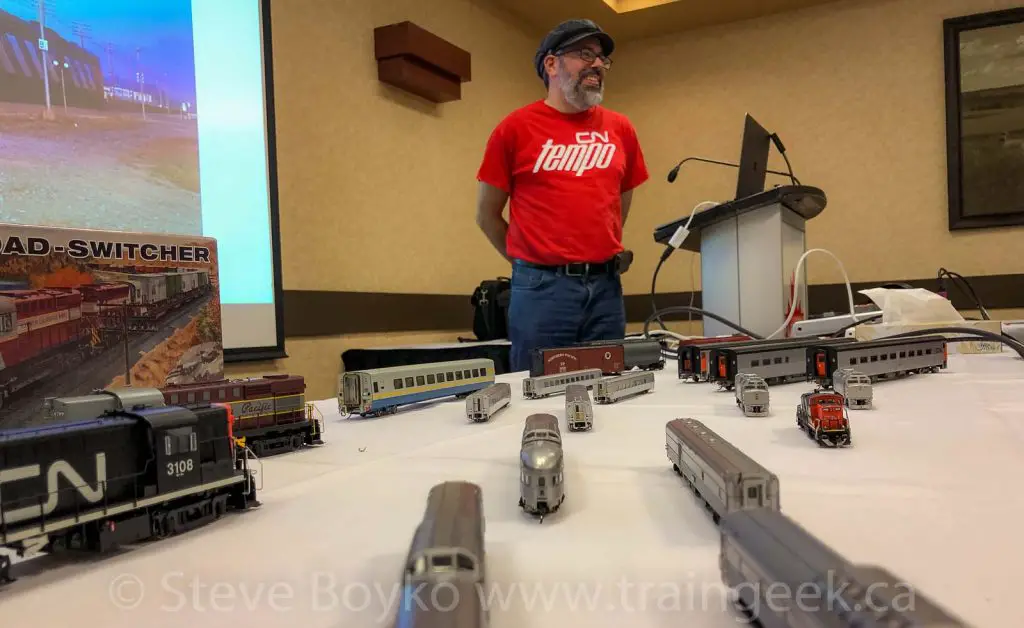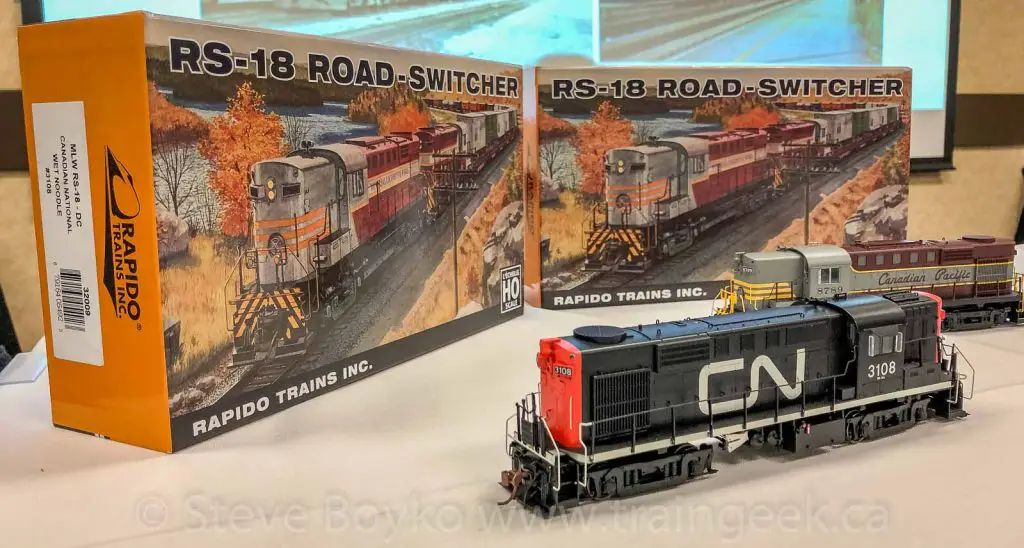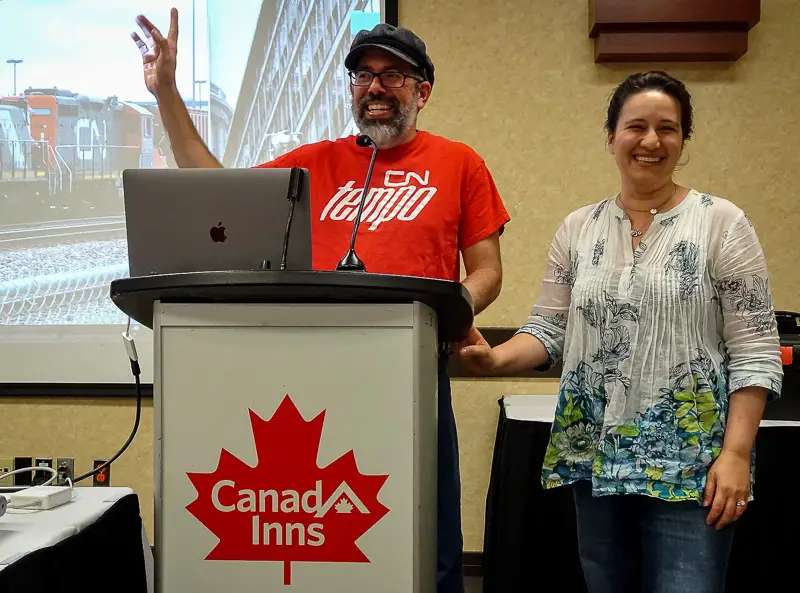
Jason Shron and his wife Sidura Ludwig gave a talk one evening last week, on Rapido Trains’s efforts to save full size trains, on life with a hardcore “train nut”, and on Rapido’s latest model offerings. It was a great talk and it was well attended.
Jason started by reviewing the work that he and the rest of Rapido Trains have been doing on their three full size railway cars… LRC locomotive VIA 6917, ex VIA RDC 6133 and the 4-8-4 sleeper car EDMUNDSTON.
Edmundston
Rapido first turned a profit in 2013, ten years after its founding. Jason said he always intended to invest Rapido’s profits into helping save passenger cars, and in 2015 he put that into action, buying EDMUNDSTON sight unseen, rescuing her from a forest in northern Georgia.
Jason’s original intent was to lease EDMUNDSTON to a tourist line, but over time that has changed to a new goal. He would like to have EDMUNDSTON run as a private car on selected passenger lines in Canada and beyond. It will be HEP 1 and Amtrak compatible so it should be able to run on anything except the Canadian.
Follow this link to help restore EDMUNDSTON.
RDC 6133
The story of Jason’s rescue of 6133 from the scrapper is well known, so I’ll just go over the bare details. Industrial Rail Services Inc. (IRSI) in Moncton had purchased a lot of ex VIA RDC (Rail Diesel Cars) with the intent of refurbishing them and selling them to VIA and other railways. This didn’t really pan out, and for several reasons IRSI went bankrupt. The receiver was trying to recover as much from IRSI’s assets as they could, so they brought in a company to scrap the remaining vehicles to recover the stainless steel and other materials. Jason heard about this and promptly flew a team down to Moncton to select the best RDC to save. They bought it and had it shipped to Toronto via CN.
Rapido put out a call to the railfan / modeling community, and in six weeks they raised $35,000 toward purchasing and restoring the RDC.
After a lot of work, it is in running order.
Follow this link to help restore VIA 6133.
VIA 6917
Jason didn’t mention the LRC that he helped save. I’m mentioning it here for completeness. This locomotive is now under the auspices of the Toronto Railway Historical Association (TRHA) and you can read its story here.
The VIA Historical Association
The big announcement for this meeting was the founding of the VIA Historical Association, incorporated on July 11, 2019.
The intent for the VIA Historical Association / L’association historique de VIA (VHA-AHV) is to preserve representative cars and locomotives from VIA Rail for future generations to study and enjoy. Canada’s railway museums have been doing a good job of preserving CN and CP passenger cars and locomotives, but nobody has been preserving the VIA era fleet. Since VIA just turned 40 years old, it’s time to start.
I expect more details on how to help will come out soon. Right now I believe they have four directors and are working on their charitable status so they can issue tax receipts.
I’m excited for this.
Model Trains

As Rapido has grown over the years, one of their biggest issues has been project management. There are a lot of things that have to be done to issue new products, from market research through prototype research to making moulds, detail parts, packaging and shipping. If you miss one step, everything gets thrown off. Rapido has recently hired project managers and designers to help ensure that their products get out on time and at the highest quality.
Jason addressed the issue of product timing. Often products that are announced first don’t get released first, and the usual reason is cash flow. Every company that wants to survive has to manage cash flow. Making model trains takes a large investment of cash to make the moulds and produce product, many months before they see any income from selling the model. Rapido has to ensure that they are receiving a steady income to cover these investments, so sometimes they bring projects forward to market before others to make sure they have enough cash to pay their employees and suppliers.
One prime example of this is the LRC locomotive, which was a record 8 years from announcement to shipping.
The Train in the Basement

During the Question & Answer session, Sidura talked about the train in the basement, the full size VIA coach in their Toronto-area basement. She was asked, “how did you allow him to do this?” but said she always looked at it differently. She said his determination was an inspiration for their children, to show that if you decide you are going to do something, you have to think outside the box on how to accomplish it and not let anything stop you from your goal.
She commented that she had no issue with the coach, but more of an issue with Jason’s expanding Kingston Sub layout!
Random Notes
Here are a few other random notes I took during the Q&A session.
- The tooling for a steam locomotive costs three times as much as a diesel locomotive.
- Jason’s first memory of a train was being on a Turbo at two.
- The CN Dash-8 locomotive was intended to be part of a train set with well cars and containers. Unfortunately the production cost of the train set was well over the retail price that stores wanted to charge.
Just One More Thing
Here are some links to help save Canadian passenger equipment:
- Support Edmundston restoration
- Support VIA 6133 restoration